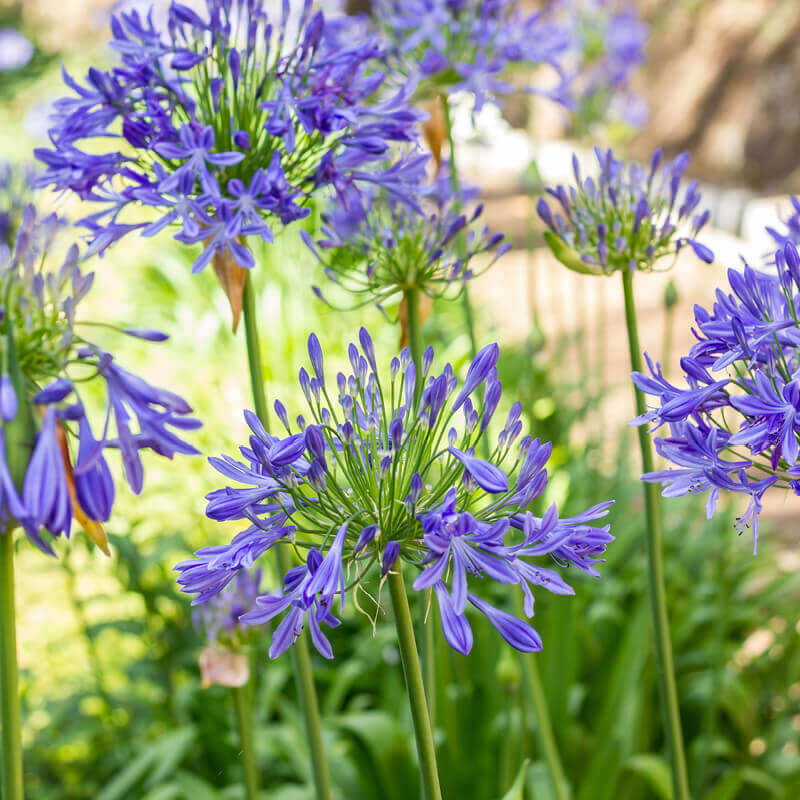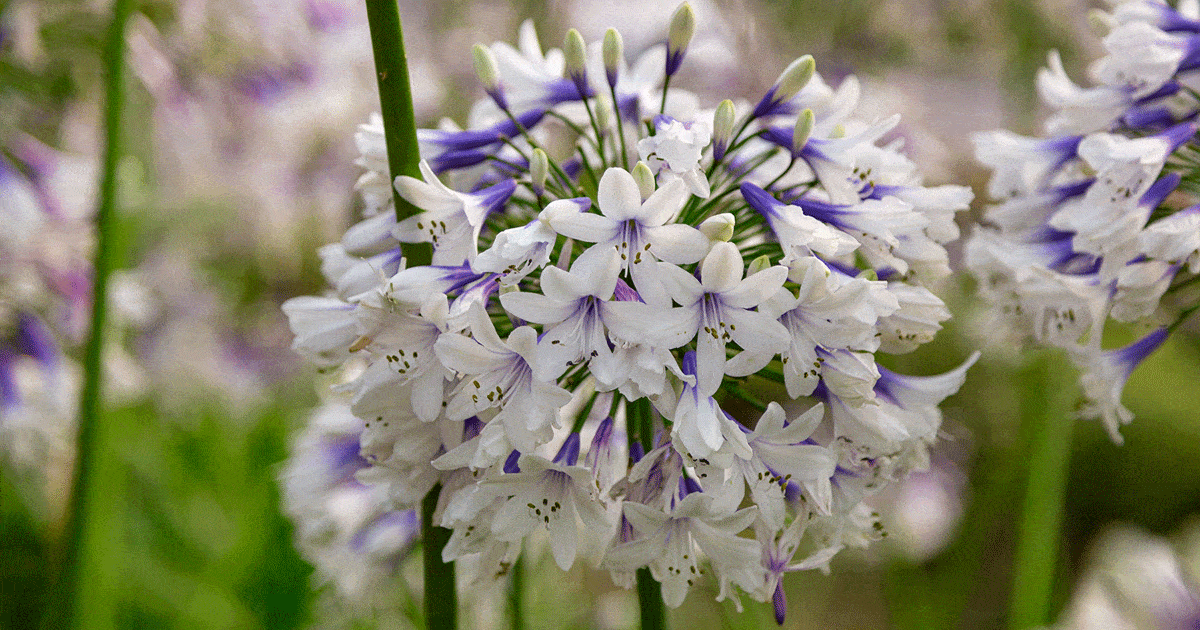Growing Agapanthus: A Complete Overview to Beautiful Blooms
Growing Agapanthus: A Complete Overview to Beautiful Blooms
Blog Article
Understanding the Art of Agapanthus Treatment: Essential Steps for Healthy And Balanced Growth and Lively Flowers
In the realm of cultivation, the farming of agapanthus stands as a satisfying undertaking for those that seek to support these classy blooming plants. From choosing the best variety to grasping pruning strategies, the trip towards growing flourishing agapanthus plants is diverse and holds the crucial to unlocking the complete potential of these agricultural gems.

Selecting the Right Agapanthus Variety

When choosing the ideal Agapanthus range for your garden, think about elements such as climate suitability, bloom color, and growth practice. Agapanthus, typically referred to as Lily of the Nile or African lily, can be found in a selection of shades varying from tones of purple and blue to white. Choose a bloom color that matches your existing yard scheme to develop an unified landscape. In addition, consider the climate in your region to guarantee the Agapanthus variety you choose can grow in your details conditions. Some selections are extra tolerant of cold temperature levels, while others choose warmer climates. Understanding the growth habit of different Agapanthus selections is important for appropriate placement within your garden. Some selections have a clumping development behavior, perfect for containers or borders, while others have an even more spreading nature, ideal for ground cover or mass growings. By thoroughly evaluating these factors, you can choose the excellent Agapanthus range to improve the charm of your garden.
Ideal Growing Conditions
Thinking about the ideal ecological demands is crucial for successful Agapanthus farming. Agapanthus prospers in well-draining soil with a slightly acidic to neutral pH level. When planting, select a location that obtains full sunshine to partial shade. In hotter environments, offering some afternoon color can stop scorching of the fallen leaves. Agapanthus plants are sensitive to cool temperatures and need to be secured from frost throughout cold weather.
To guarantee healthy and balanced growth and lively blossoms, plant Agapanthus light bulbs at a deepness of concerning 2-4 inches and area them 8-12 inches apart. Mulching around the base of the plants helps preserve dampness and suppresses weed development.
Watering and Feeding Tips
Maintaining proper moisture levels and providing important nutrients are crucial elements in the care regimen for Agapanthus plants. It is essential to strike an equilibrium when it comes to watering Agapanthus. These plants prefer regularly moist soil yet are vulnerable to root rot if overwatered. During the expanding period, water deeply as soon as a week, making sure the soil is well-draining to prevent waterlogging. In hotter environments or throughout periods of drought, even more regular watering may be essential to keep the dirt evenly wet. Nonetheless, decrease watering in the winter season to stop water logged problems.
Feeding Agapanthus is vital for promoting healthy and balanced growth and prolific blooms. Apply a balanced fertilizer, such as a 10-10-10 formula, in the very early spring as new growth arises. By following these watering and feeding tips, you can ensure your Agapanthus plants prosper and generate lively, lasting blossoms.
Trimming Strategies for Agapanthus
Trimming Agapanthus plants at the ideal times and with proper methods is essential for maintaining their click to find out more health and promoting optimum development and blooming. The perfect time to trim Agapanthus is in late winter season or very early springtime before brand-new development arises.
For flowered stems, wait till the blossoms have withered and after that trim them back to the base. This not just cleans the plant's look yet also urges the advancement of brand-new flower buds. Deadheading invested blossoms can likewise reroute the plant's energy right into creating even more blooms rather than establishing seeds. However, if you wish to collect seeds for proliferation, leave some blossoms to completely dry and mature on the plant.
Bear in mind to make use of clean, sharp devices to make exact cuts and minimize the danger of presenting illness. Agapanthus. Regular trimming will certainly help maintain your Agapanthus looking healthy and balanced and neat while making certain a bountiful display of lovely blossoms
Handling Usual Pests and Conditions
After making sure appropriate trimming techniques for Agapanthus, it is crucial to attend to typical bugs and illness that can influence the health and wellness and vitality of these plants. One typical insect that affects Agapanthus is the Agapanthus gall midget.
In addition, Agapanthus plants can experience from root rot if they are planted in poorly draining soil. By being attentive and taking punctual activity versus diseases and bugs, you get redirected here can aid your Agapanthus plants thrive and create dynamic blooms. Agapanthus.

Final Thought
Finally, mastering the art of agapanthus treatment includes selecting the best variety, providing optimal planting conditions, proper watering and feeding, suitable trimming methods, and attending to typical parasites and diseases. By complying with these vital steps, you can guarantee healthy and balanced growth and dynamic flowers for your agapanthus plants. Remember to routinely monitor and hop over to these guys maintain your plants to advertise their general well-being and long life.
To ensure healthy development and vivid flowers, plant Agapanthus bulbs at a deepness of about 2-4 inches and room them 8-12 inches apart. By adhering to these watering and fertilizing ideas, you can guarantee your Agapanthus plants prosper and produce dynamic, durable blooms.
One usual bug that influences Agapanthus is the Agapanthus gall midge. In addition, Agapanthus plants can suffer from root rot if they are planted in poorly draining soil. By following these vital actions, you can guarantee healthy and balanced development and dynamic flowers for your agapanthus plants.
Report this page